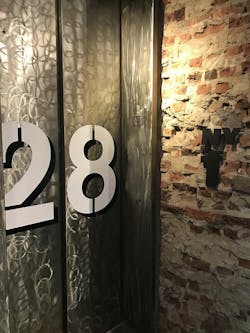Like the Shabby-Chic Look? Thank the Recession.
Born out of the recession, the shabby-chic retail aesthetic has created a circular economy alongside the DIY movement. As a design theorist and historian, I’m particularly interested in the ways that the recession has impacted design.
The design industry took a massive hit during that time with companies closing or downsizing dramatically, but the impact is much more far reaching in ways that are unique to interior design.
Transforming Collapse into Beauty
Before 2007, space was thought of as an available commodity; the fact that the recession was a result of a home loans collapse is proof enough of that. The recession transformed the American idea of space and ownership—in particular that square footage comes with a cost.
As it has always been, the most run down, boarded up spaces are those that have the lowest price tag, and cities recovering from the recession had an abundance of such real estate. Companies—in particular, “mom and pop shops,” local retail, and maker spaces—which decided to make a start in the post-recession economy received lower loans than during the pre-recession period. Less money meant that a choice often had to be made between location and non-essential interior design.
Non-essentials were, of course, the first to go: flooring, signage, wall coverings, and ceiling tiles. Provided a building had good bones, solid walls, concrete floors, and a safe roof overhead, the rest could be worked around. Funds went towards necessities like furnishings, inventory, and a potentially long maintenance list on spaces left vacant for extended periods.
Shabby-Chic = Unfinished Business, Intentionally
It isn’t ideal to go to market looking as if a space is only half-finished, so this aesthetic worked best with smaller companies that were easily forgiven for leaving the flooring, walls, and ceilings exposed. Handwritten signage and the use of chalk boards is understandable in the local boutique in a way that stores like Nordstrom’s can’t quite get away with.
With local shops owning the shabby-chic aesthetic, and as the economy slowly crawled back, other hesitant retail entrepreneurs took the opportunity to start their own shops. Embracing the bare-bones aesthetic allowed more businesses to begin without the overhead needed to change the look of the store’s space.
This being a circular economy, interior manufacturing companies took notice of these shabby-chic stores and capitalized on supplying the demand. First came concrete sealants and stains, followed shortly by exposed-ceiling wire management and lighting systems, and then hardware for utilizing brick walls by attaching shelving and other retail necessities.
As the aesthetic became more widely accepted and the economy returned to pre-recession numbers, shabby-chic seeped into the products that originally fell aside.
LVT embraced worn-down concrete and wood printed in high definition.
Wall coverings began experimenting in faded motifs.
Metal, mimicking the exposed plumbing in shabby-chic interiors, came back in a big way.
The fact that mixing metals has become mainstream is a reaction to the recession leading to more exposed interiors: you can’t be picky that your plumbing and other details are in different metallic hues when you’re just grateful to have them.
Catch Up: The Best Interior Design News in Town
Tired of Looking Worn Down
The reasons why shabby-chic has become a popular commercial design aesthetic are clear, but just how long it will stick around is less so. Although a newcomer to the commercial products lexicon, as of NeoCon 2018 we already started to hear the grumblings of designers who say they’re tired of seeing the worn motif.
However, being sick of seeing something doesn’t mean its popularity in the industry has faded. With lead times averaging 18 to 24 months between the start and completion of a project, we’re just now starting to see a more wide-scale use of shabby-chic in commercial interiors. It has a snowball effect in that the more an aesthetic is used in interiors, the more people see and appreciate its use, and the more it’s asked for.
An Aesthetic Amusement Park
In particular, Chelsea Market comes to mind. The expansive shopping center in New York City is a popular tourist destination that features an overly-crowded and dimly-lit corridor with shops lining every wall. In terms of the retail experience, it shouldn’t work. The space is too busy, overwhelming for a majority of the senses, with little wayfinding.
But the industrial, shabby-chic aesthetic of the space makes the shops feel more like an amusement park than a mall. Visitors flock to Chelsea Market for the atmosphere, but also to come away with their own Brooklynite goods, which then brings a piece of the aesthetic to their own homes.
In the case of shabby-chic, it seems like the circle is just getting started, and it will be interesting to see where it progresses.
About the Author

Kadie Yale
Former Editor-in-Chief
Kadie Yale holds a BA in Industrial Design from San Francisco State University and a MA in Decorative Art History and Theory from Parsons the New School. In her role as editor-in-chief from 2015-2018, she led the interiors+sources team in creating relevant content that touches on sustainability, universal design, science, and the role of design in society.
